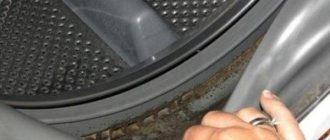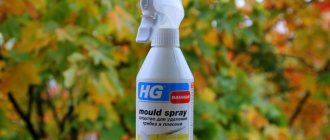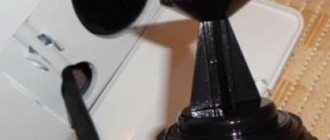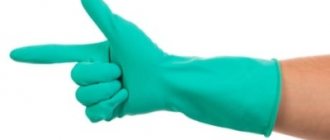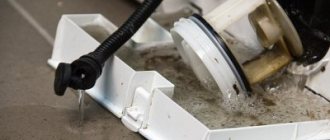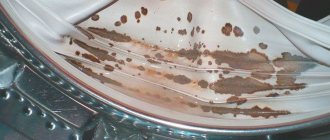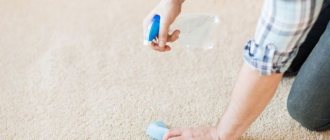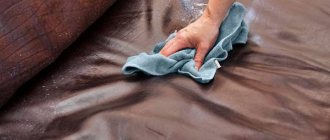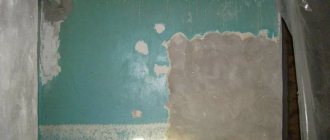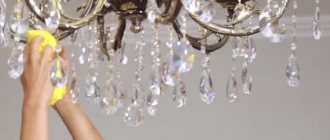The problem with how to clean an elastic band in a washing machine arises mainly when visible signs of contamination and specific odors appear. Moreover, experts insist on the need to regularly treat the tympanic cuff with antiseptics. The accumulation of various compounds in a humid environment between the layers of the sealant causes intensive reproduction of pathogenic microorganisms. To avoid the appearance of fungus and mold in the cavities of the unit, you should schedule cleaning of the washing machine in a timely manner.
Causes of drum rubber contamination
The seal in a washing machine is a complex structure with recesses in the internal planes. If you pull the folds of the cuff apart, you may find residual foam, small particles of dirt, fabric lint, and other accumulations. Due to the configuration features, a humid environment remains almost constantly inside the sealing rubber. With each wash, various debris remains there, and all this provokes the formation of microorganisms and unpleasant odors.
Among the reasons for contamination of the sealing insert are:
- low quality laundry detergents;
- bleaches and anti-scale compounds are not used;
- abuse of fabric softeners;
- poor water quality;
- storing dirty laundry in the car.
One of the main reasons for the contamination of the gum and the musty smell is that the high-speed washing mode with a low temperature is mainly used.
How to clean a car under the rubber
It is no secret that the rubber band can be removed completely and the surface underneath can be thoroughly washed. The scheme is simple:
- It is necessary to use a screwdriver to pick up the clamp on which the rubber cuff is attached
- You need to remove the clamp, carefully use a screwdriver in a circle
- Next, you can remove the rubber cuff
- Wash off any visible dirt from the gum with water.
- Soak the seal in a chlorine-containing substance
- Dry the part and put it back.
If you have difficulty removing the rubber band, but need to clean it, you can call an equipment maintenance specialist.
Indications for cleaning
When planning how and when to clean the elastic band in an automatic washing machine, you should take into account the operating features of the unit. Equipment manufacturers recommend regularly sanitation of the drum, sealing insert and trays to prevent undesirable consequences.
When you urgently need to clean the washer drum rubber:
- after washing, cloudy stains are found on the laundry;
- a musty smell appears;
- formation of plaque on seal surfaces;
- the presence of mucus, dirt, sedimentary substances in the cavities of the rubber liner.
Neglect of sanitary requirements is fraught with disastrous consequences in the form of the development of pathogenic microorganisms in the humid environment of gum, the micelles of which can cause a number of dangerous diseases.
Get rid of scale as quickly and easily as possible
A common misconception regarding the issue of scale in the machine, how to clean a completely contaminated system from this disaster, is that it is correct to use Calgon. Calgon is not a descaling agent. Calgon is used to soften water. And water softening, even a small one, will not save the system from the formation of limescale contamination, even if used with a combination of the best powder. It doesn't do any cleaning. The same set of simple improvised means will get rid of scale:
- Lemon acid;
- Soda Ash;
- White;
- Vinegar.
But if things get really bad, you’ll have to spend money on special ones. cleaning products sold in hardware stores.
Effective cleaning agents for rubber seals
When deciding how and how best to clean the rubber band of an automatic washing machine, preference is given to universal compounds to eliminate bacterial plaque and the musty effect. Specialized products for caring for household appliances are particularly successful. At the same time, folk methods of cleaning the drum rim using improvised means also give good results.
Specialized
Manufacturers of current products offer a wide range of solutions. When choosing what and how to clean the rubber of the washing machine drum, consider the following options:
- liquid compositions for sanitizing the seal and tray. The mixture contains active substances to combat dirt, rust, scale, and fungus. Some options can also neutralize unpleasant odors and are designed to eliminate the musty effect;
- powders and granular cleaning products. Specialized mixtures ensure effective removal of dirt, scale, and mold spores. They are needed to prevent the formation of mucus on the elastic, a favorable environment for the development of microbes;
- tablets in the form of a compressed mixture. The composition contains chloride substances or biocomponents and is a concentrated form of specialized products to combat harmful microorganisms and specific odors.
Cleaning elastic in a washing machine
Concentrated washing powder with inclusions of bleaching granules can neutralize the risk of the development of pathogenic microflora in the cavities of the unit. If you regularly use phosphate detergents, you will not need additional disinfection of the internal surfaces of the gum.
Home Remedies
To remove alkaline deposits on the surfaces of the rim, use available means with an acidic environment. People practice a number of methods for cleaning dirt under drum rubber using available products:
- table vinegar. A 1:3 solution in water is used for surface treatment;
- hydrogen peroxide or other analogues of pharmaceutical antiseptics. Substances are used to neutralize fungal colonies;
- baking soda. The gruel is easy to wash away sediment and bacterial plaque, and soda also helps eliminate unpleasant odors;
- lemon acid. It is considered an effective remedy for scale, yellow plaque, and harmful microflora;
- boric acid solution. 10 g of dry matter is dissolved in 0.5 liters of boiling water, used to eliminate fungus, mold, and mustiness;
- monarda extract. The liquid helps in the fight against microbes on the inner planes of the tympanic cuff;
- copper sulfate. Dissolve 20 g of the drug in 0.5 liters of water and treat the rubber rim affected by the fungus.
Essential oils are used to prevent the development of microflora and eliminate unsightly odors. They are limited to small doses, given that the concentrated composition negatively affects the integrity of the structure of the sealing gum and plastic parts.
Use of household chemicals
Manufacturers are constantly expanding their line of products aimed at combating mold in the rubber bands of washing machines, but housewives assure that Domestos copes with the problem perfectly. Apply the solution to the surface of the gum, then wipe it well with a sponge. If you cannot wash all the folds, remove the cuff.
“Whiteness” can also wash the gum if you follow our instructions:
- Remove as much dirt as possible with a damp cloth.
- Dampen the sponge with the product and wipe the inside of the cuff.
- Wipe the washing machine drum.
- Close the door, wait half an hour.
- Turn on the washer in rinse mode.
It is possible that in advanced cases you will have to repeat the procedure, but more often “Belizna” copes with mold on an elastic band in one go.
Cleaning methods
When solving such a problem as cleaning the drum seal in an automatic washing machine, the methods involved depend on the nuances of the upcoming procedures.
From dirt and stains
For the comprehensive removal of dirt under the rubber band and yellow spots, specialized formulations with chloride substances are relevant.
Sequence of procedure:
- Use a damp cloth to remove dirt and deposits from the surface of the rubber rim;
- carefully bending the edges of the flexible structure, clean the inside of the cuff from debris;
- soak a damp sponge with a specialized product and wash both surfaces of the seal;
- for better effect of the cleaning composition, close the unit door and leave for half an hour;
- Next, run the washer in idle mode to clean the drum.
Cleaning the rubber band in the washing machine from dirt and stains
After completing the cycle, wipe the rubber seal dry and leave the door ajar for ventilation.
From plaque and rust
Rusty stains will grow along the perimeter of the drum seal if measures are not taken in a timely manner:
- Use a damp sponge to remove the top layer of dirt and rust particles;
- Treat the affected areas with acetone-based nail polish remover;
- leave for 40-60 minutes.
Next, turn on the rinse mode at a temperature of 60°C, after which the rubber ring is wiped dry.
From mold and mildew
If you plan to clean the rubber liner from pathogenic microflora, it is advisable to use monarda extract. To do this, 15 ml of liquid is diluted with 200 ml of distilled water. The substance is sprayed onto the surface to be treated; there is no need to wash off the composition.
To eliminate mold in hard-to-reach places on the o-ring, a solution of copper sulfate will help:
- prepare a solution from 50 g of copper sulfate and 2 liters of boiled water at room temperature;
- treat the rim by spraying liquid using a spray bottle;
- After 6-12 hours, start the unit in idle wash mode, then wipe the cuff dry.
When deciding how to clean the rubber band of a washing machine to prevent the development of microorganisms, hydrogen peroxide is often used. Treat the surface with an undiluted solution. The sponge is soaked in peroxide and surface stains are removed. Next, using a swab moistened with a substance, carefully treat the cuff from the outside and inside. The application does not wash off, just wipe dry.
From an unpleasant odor
Lemon works great as a washing machine freshener:
- remove the zest from the citrus into small shavings, place the aromatic mass in a bag or special container and place it in the drum;
- juice is squeezed out of the pulp, the liquid is filtered through a fine sieve;
- soak the sponge with lemon juice, treat the internal surfaces, including the cuff on both sides, the walls of the drum, and the door;
- pour 2 tbsp into the tray. spoons of citrus juice.
Lemon is a remedy for unpleasant odors in the washing machine.
Start the rinse mode at a temperature of 40°C, after the cycle the seal is wiped dry.
Rules for cleaning the seal
The cuff should be cleaned regularly. Otherwise, dirt will begin to get on your clothes, and an unpleasant odor will appear in the room.
Before carrying out manipulations, disconnect the washing machine from the electrical network.
Children and pets should not be in the room during cleaning.
If you use strong-smelling substances, open the bathroom door and open the windows.
Wear protective gloves and closed clothing to prevent harsh chemicals from coming into contact with your skin. If cleaning products come into contact with your eyes or skin, immediately wash the affected area with plenty of warm water.
Prevention measures
To prevent the accumulation of dirt, the formation of pathogenic microorganisms and a specific odor, you must follow the operating rules of the automatic washing machine:
- After each wash, thoroughly wipe the drum rubber;
- at least once a month, run a full laundry washing cycle, choosing a program with a water temperature of 60°C;
- choose products for your automatic washing machine wisely, without overusing foam additives and rinse aids;
- Use bleach once a week if the washing powder does not contain special granules.
It is also important to ensure ventilation of the drum; to do this, after completing work, it is enough to leave the unit door not tightly closed. Experts strongly recommend removing clean items from the machine immediately after washing. To prevent the development of harmful microorganisms in hard-to-reach areas of the seal, you should periodically treat the drum rubber with antibacterial agents.
Substances containing chlorine
To clean stains, you can also use bleaches that contain a chlorine base. Even ordinary laundry soap can be used to wipe the sealing gum.
laundry soap
Then all that remains is to put the machine in the wash at a temperature of 65 degrees, which will finally kill off all the bacteria.
